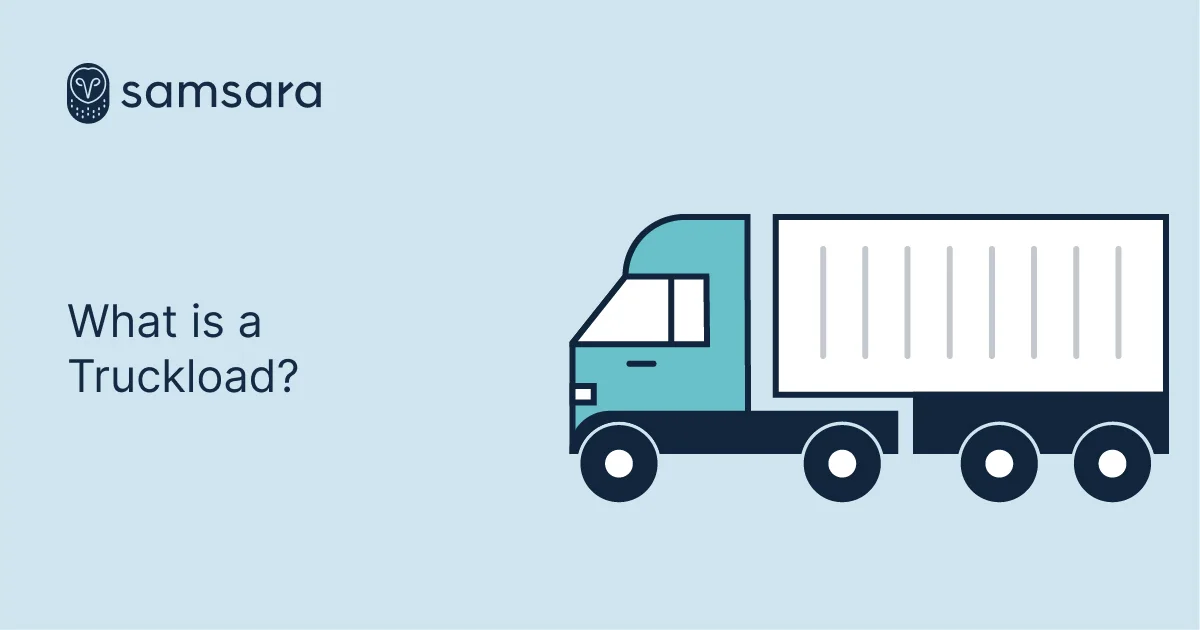What is a Truckload (TL)?
October 22, 2021

Get Started With Samsara
Check Our PricesKey Takeaways
Truckloads are a mode of transporting large shipments over the road. It also refers to quantities of freight required to fill a trailer—typically over 10,000 pounds. Unlike less-than truckload (LTL) shipments which don’t fill an entire trailer, truckloads or full truckloads (FTL) usually don’t make multiple stops and deliver freight to distribution centers and warehouses.
What is truckload (TL)?
Truckloads are the quantity of freight required to fill a trailer, which is usually more than 10,000 pounds. In the freight industry, a truckload is also a mode of freight for transporting large shipments by road.
Typically, freight is transported in trailers that are 48 to 53 feet long. These trailers can hold around 45 pallets or up to 43,000 pounds of goods. The freight needs to occupy more than half and up to a full capacity trailer to be considered a truckload.
Shippers tend to use the truckload method when they:
Have enough items to fill an entire truck
Want the cargo in the trailer by itself
Cargo is time-sensitive
Decide it’s more cost-effective than other methods.
What’s the difference between FTL and LTL shipping?
Large volumes of freight are transported through two kinds of trucking operations: full truckload (FTL) and less than truckload (LTL).
Most FTL are from single suppliers and move directly from a shipper to a consignee. Pricing is usually on a cost-per-mile basis and will change daily, making it more expensive than LTL. Also, unlike LTL, freight class is not important in truckload.
LTL shipments are smaller and require less space, usually less than 5,000 pounds. These shipments cannot fill an entire trailer, so LTL freight involves commercial vehicles carrying goods from different businesses—they share the space. LTL shipping is cheaper because shippers only pay for the space they use. However, LTL is much slower than FTL because of multiple stops and transfers before the freight reaches its final destination.
When would businesses use truckload shipping services?
Retailers and large businesses have large supply chains and transportation networks to get their products in the customers’ hands. Over the road (OTR) trucking is a reliable, fast, and relatively inexpensive way to transport goods over long distances.
Some conglomerate businesses maintain their own fleets to transport truckload freight. Other companies prefer to hire logistics services (such as FedEx) or contract owner-operators or truckload carriers to move truckload shipments.
Truckload shipping mainly uses (but are not limited to) three kinds of trucks:
Dry vans: Used to move non-temperature sensitive dry goods
Refrigerated trailers/reefers: Reefers are used to maintain temperature-sensitive goods such as frozen foods, medicine, paint, flowers, and more
Flatbed: These trailers don’t have walls or doors and are used to move construction equipment, agricultural goods and vehicles, and building materials
Due to their size and loads, truckload freight shipping businesses often transport goods to distribution centers or manufacturing warehouses.